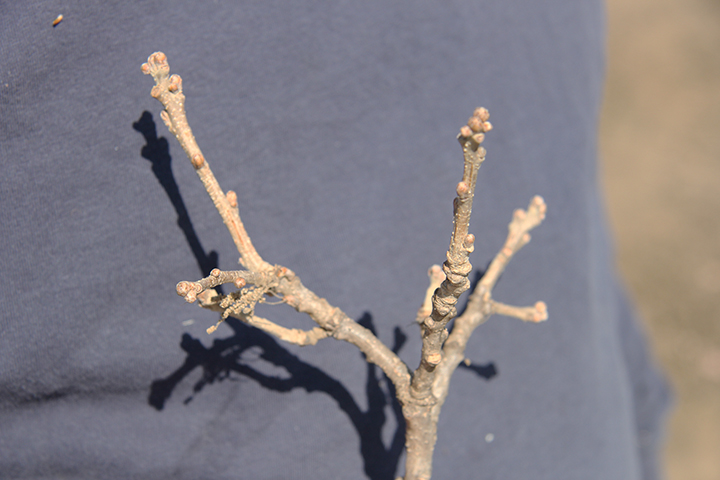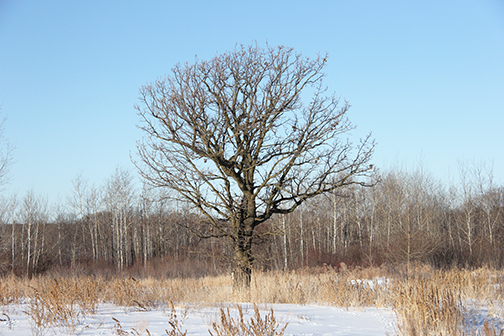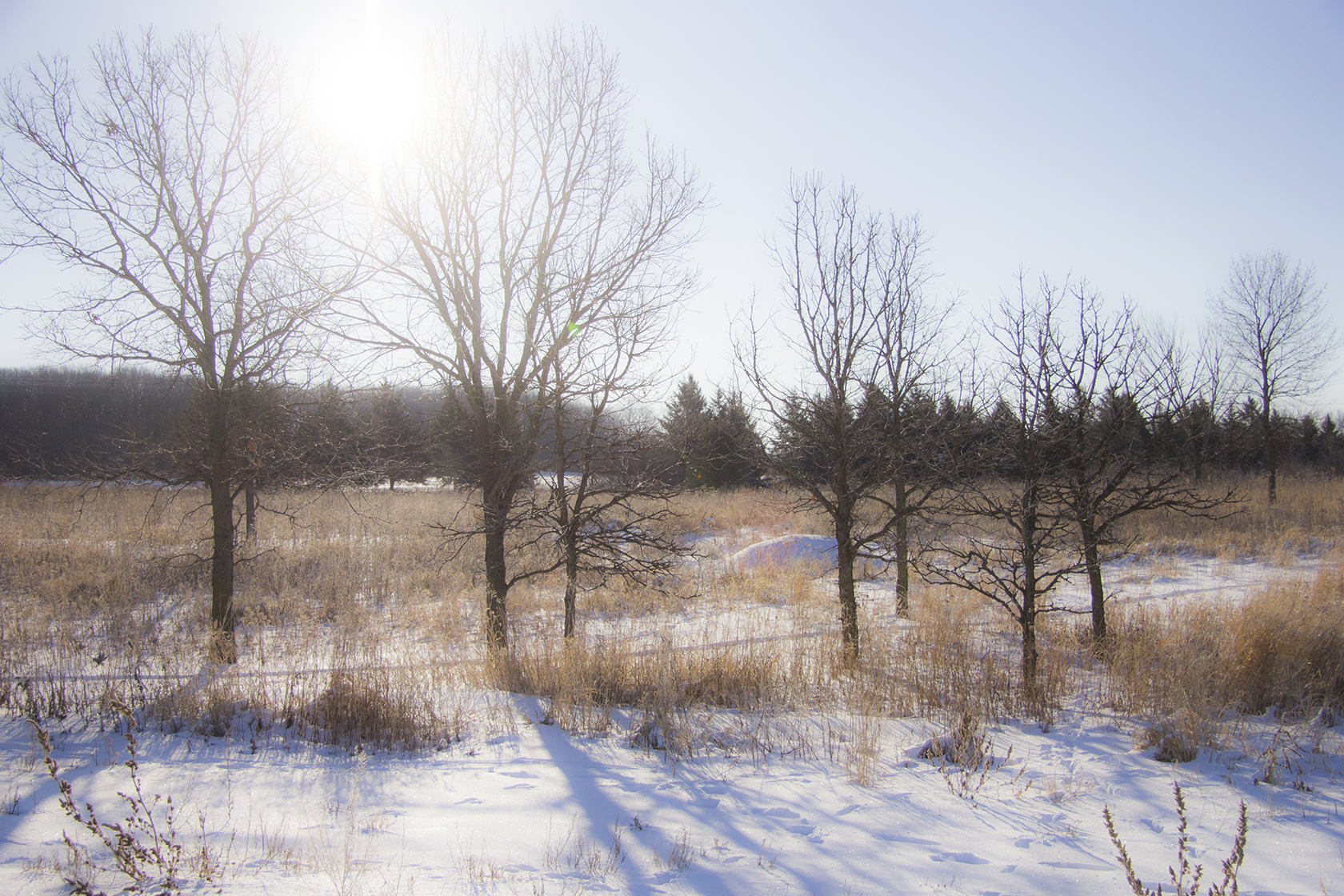The time after the ground thaws to before things green up is the time to burn prairies. Also, the time after the ground thaws and before the trees bud is the time we dig up, transplant, pot, or ball and burlap trees. The window for much of what we do this spring of 2018 is a very small one.
As of yesterday, Saturday May 5, the ground is still frozen in spots. But it's thawed enough for us to do what we need to do.
We burn the prairie plots around the farm, and the prairies we have installed for customers. The burns enhance the soil, set back the weeds, and promote growth of the native plants.
The burns should be done before the prairie plants green up, as the burn forces them to start over. Unfortunately, during all this, the trees are beginning to bud. Their budding is a function of their activity, and It is not good to disturb tree roots when they become active, as doing so can kill the tree. So disturbing the roots should be done while they are dormant.
At the tip of this Bur Oak branch you can see the buds beginning to swell. That means this tree is active, and yet we have many of them that we need to ball and burlap, pot, or transplant. So we hustled on Friday, May 4th, to get this done, thinking that by Monday, it may be too late to dig up trees.
These crooked sticks in the ground are Bur Oaks. It's hard to grow a straight one, so we plant many of them and then go through them when they get to a certain size, separating the crooked ones from the fairly straight ones.
The straighter Bur Oaks get either potted for later use, or balled and burlapped, after which they can be planted at any time. Paul, an employee, is digging holes in the background where the smaller and straighter ones will be transplanted.
We use a tree spade to cut the roots of tree roots. This allows us to keep the soil on the roots or, in effect, take the soil with the tree.
Here's a photo taken years ago of a balled and burlapped tree that we are about to plant in the yard of the house behind. Our tree spade, which allows us to ball and burlap, allows us to dig up the trees before they become active, and then plant them throughout the rest of the spring, summer, and fall.
















